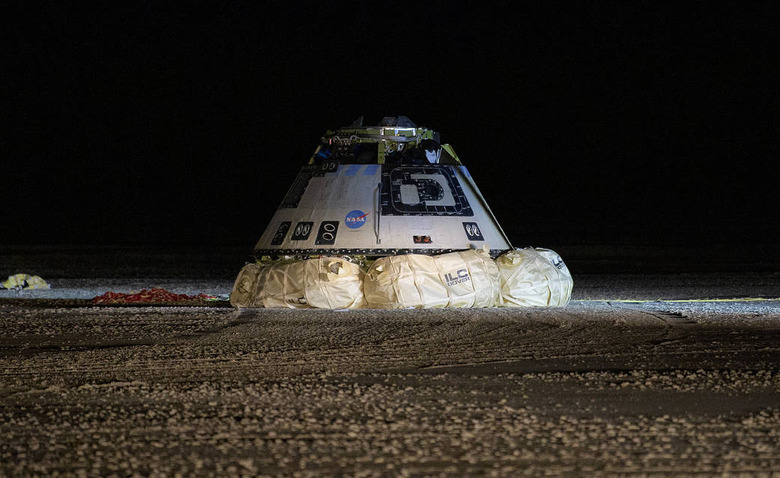Boeing's Starliner Just Can't Stop Breaking
December 20th, 2019, was supposed to be a groundbreaking day for NASA and Boeing, with the latter's Starliner spacecraft making its maiden voyage for the International Space Station. Empty of crew for the test flight, things seemed to be going well until a "glitch" in the spacecraft's timer led it to burn more fuel than it should have, and its handlers were forced to abort the ISS visit and send the spacecraft back to Earth.
At the time, and in the days that followed, Boeing and NASA downplayed the severity of the glitch. They said it was a simple fix and that if the spacecraft had crew aboard, they could have salvaged the mission easily. It was a non-issue, they seemed to suggest. However, new reports highlight totally new issues with Starliner, including one that could have caused a serious problem while in space.
As NASA points out in a new post, the "Mission Elapsed Timer" was just one of three separate issues with the Starliner spacecraft. Here's NASA's rundown:
- An error with the Mission Elapsed Timer (MET), which incorrectly polled time from the Atlas V booster nearly 11 hours prior to launch.
- A software issue within the Service Module (SM) Disposal Sequence, which incorrectly translated the SM disposal sequence into the SM Integrated Propulsion Controller (IPC).
- An Intermittent Space-to-Ground (S/G) forward link issue, which impeded the Flight Control team's ability to command and control the vehicle.
These are pretty serious issues. Having a spacecraft that uses its propulsion system at the wrong times or is completely uncontrollable in space is, well, really bad, and Boeing should have caught these problems well in advance of the test.
Based on the wording in NASA's bulletin, it's clear that the space agency is losing a bit of its patience with Boeing's constant missteps:
Software defects, particularly in complex spacecraft code, are not unexpected. However, there were numerous instances where the Boeing software quality processes either should have or could have uncovered the defects. Due to these breakdowns found in design, code and test of the software, they will require systemic corrective actions. The team has already identified a robust set of 11 top-priority corrective actions. More will be identified after the team completes its additional work.
Yikes. Looks like Boeing has a LOT of work to do before NASA will allow Starliner to go up for another test flight.
